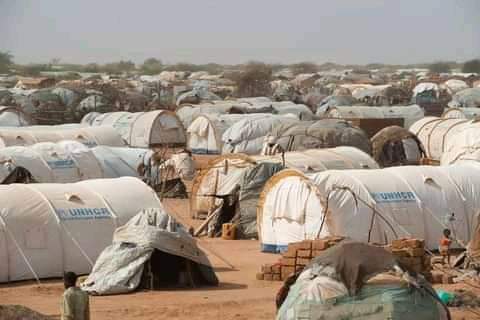Pain of children marooned in refugee camps

A humanitarian agency has raised concern over the plight of unaccompanied children living in Kakuma and Kalobeyei refugee camps, currently estimated to be about 10,000.
In June this year, over 3,000 new arrivals were recorded at the reception centres of both Kakuma and Kalobeyei where only 1,000 children were later reunited with their parents or relatives while the rest were placed in various forms of alternative care arrangements. During the same period, an additional 2,000 unaccompanied children were living in Dadaab Refugee Complex.
According to U.S. Committee for Refugees and Immigrants (USCRI), Kakuma Camp also hosts child-headed households, where unaccompanied children who are old enough to care for themselves are assisted to establish their respective households.
USCRI, which started its operations in Kenya this year said that many children arrive in Kenya’s refugee camps unaccompanied or separated from their loved ones after fleeing war, becoming orphaned or being sent ahead by their parents to save their lives.
“As more children are forced to flee in search of safety, some of the most vulnerable are those who are unaccompanied or separated from their parents or care-givers. When children migrate unaccompanied, they face heightened risks of trafficking, exploitation, sexual and gender-based violence (GBV), and other abuses,” the agency reported.
The agency documented how last year, displaced children were arriving with very little and needed clothing and shoes, a scenario that has been replicated this year.
“Many younger children were naked or had little clothing and no shoes to protect them from the elements. UNHCR (United Nations High Commissioner for Refugees) staff emphasised the need for emergency support kits for children upon arrival, including sandals, underwear, and clothes,” USCRI said.
Temporary shelter
They highlighted how the lives of children held in the reception centres, whether alone or with their families, are in limbo.
“Reception Centres are meant to be temporary while registrations are being processed. They do not contain the infrastructure for permanency or livelihoods. Although the government resumed registrations by 2024, a shortage of shelter materials kept cases pending and delayed,” they said in another publication, dubbed ‘Recovering Childhood Addendum’.
As of January 25, Kalobeyei Reception Centre alone hosted 7,357 people against its capacity of 5,475 and where 62 per cent of the unsettled population was children.
The Child-Friendly Spaces (CFS) in both Kakuma and Kalobeyei Reception Centres have limited resources to cater for the surging numbers of displaced children.
“CFS are the few safe spaces where displaced children can just be children— play, socialise and receive care. However, play equipment is run down, materials for activities such as paper and crayons are scarce, and even the CFS structure at Kalobeyei’s Reception Centre is a temporary tent,” the agency said.
Statistics show that as of July 31, 2024, Kenya hosted 782,468 registered refugees and asylum-seekers with 291,979 (37.3 per cent) residing in Kakuma and Kalobeyei, and 385,328 (49.3 per cent) residing in Dadaab.
The remaining 13.4 percent of the refugee and asylum-seeking population live in Kenya’s urban areas.
Further, USCRI cautioned that over 90,000 school-aged girls living in Kenyan refugee camps have no access to menstrual hygiene products.
“Although menstrual hygiene management is a global issue, the situation is increasingly dire for women and girls in displacement contexts, where such challenges are acute and exacerbate pre-existing vulnerabilities,” USCRI emphasised.
Additionally, the agency revealed how adult refugees were stuck at the Kakuma Reception Centre for over two years due to lack of shelter material.








